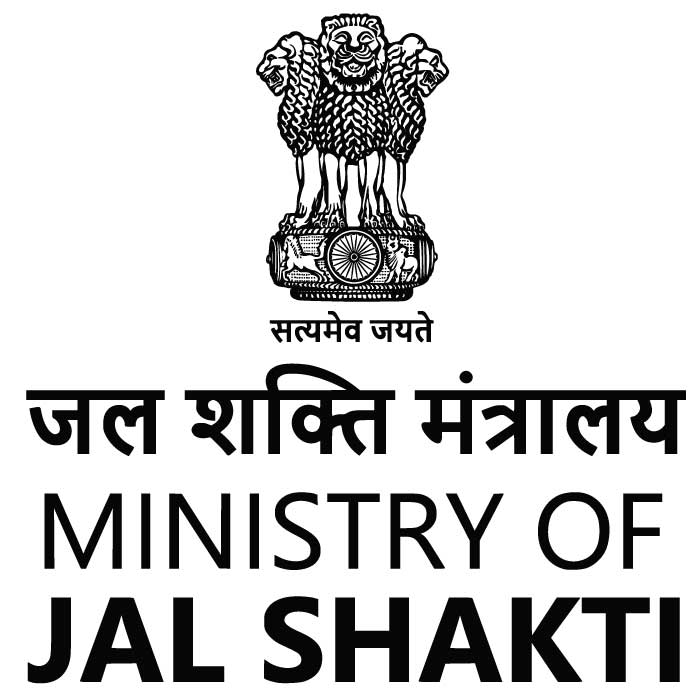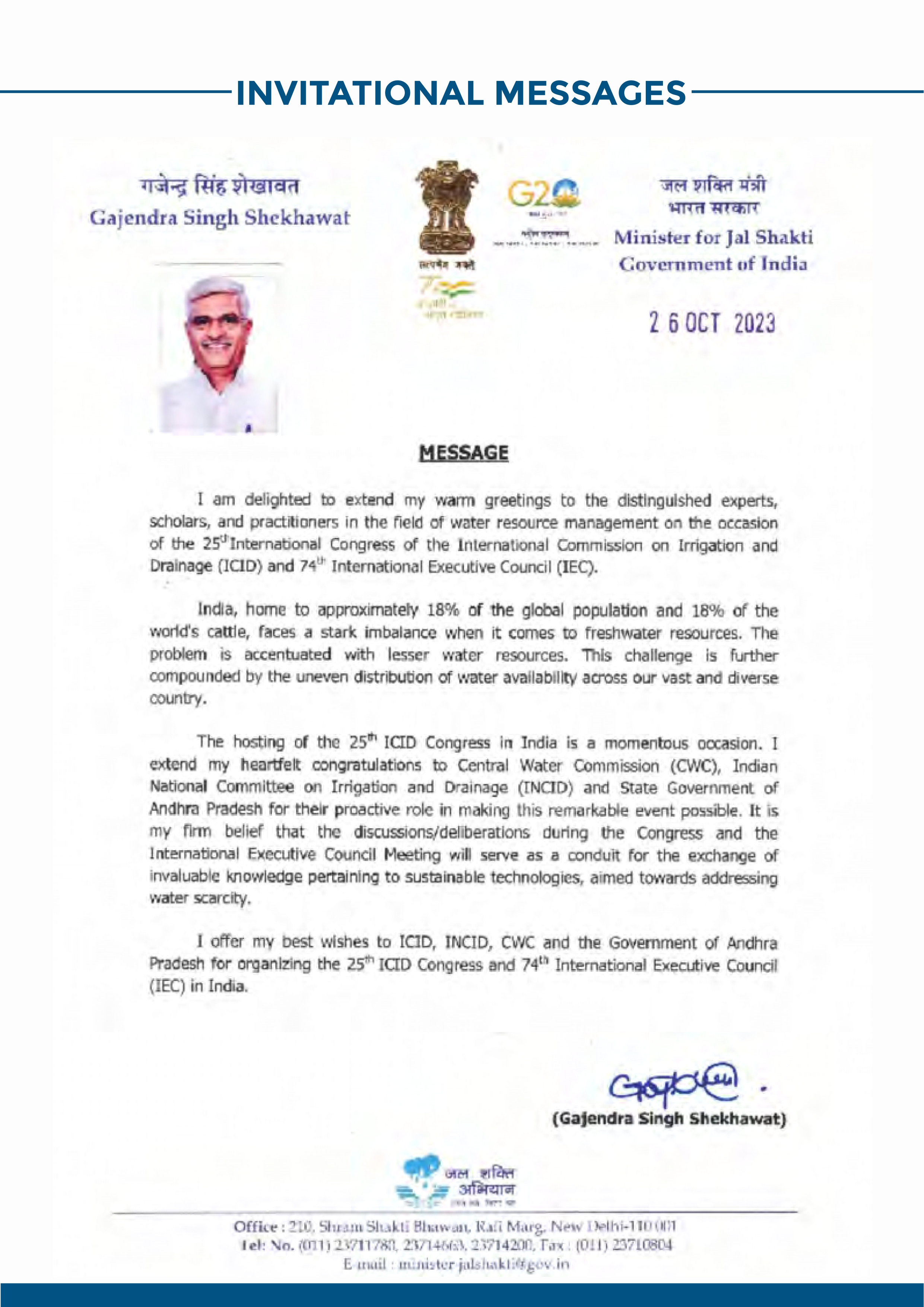Message from Ministry of Jal Shakti Department of Water Resources River Development & Ganga Rejuvenation


Water plays a pivotal role in economic, social, and environmental harmony which formsthe three pillars of sustainable development. India supports about 18% of the world’s population with 2.5% of the land 4% water resources as its disposal.Moreover, withrapidly increasing population and a high GDP growth of more than 8% is putting enormous pressure on its water resources.The growing population and increasing water use are making the freshwater scarce and polluted and posing a major threat to water resources in India. Interstate disputes are a threat to peace as well use of water. Current water resource constraints in India, in terms of both quality and quantity, can be expected to manifest themselves even more rapidly in the coming years. Competition for water between urban and agricultural sectors will be a major challenge in the forthcoming century. Provision for environmental and ecological concerns will have to be made.
India has about 20 river basins. Due to increasing demand for domestic, industrial and agriculture use, most river basins are water stressed. This is further accentuated by the fact that water demand is unevenly distributed across the country. Increasing demand from a growing population, coupled with economic activity, adds pressure on the already stressed water resources. With the country already experiencing water stress, there is a need to augment both water supply in water-rich regions lacking infrastructure and manage water demand in water-scarce regions.
In India, overall irrigation efficiency of major irrigation projects is around 40%. This is one of the reasons for increasing gap between irrigation potential created (112 M ha till end of 12th plan) and utilized (93 M ha). The major causes of such gap are poor maintenance of canals system, lack of participatory management, changing land use pattern, deviation from originally envisaged cropping pattern, no/inadequate command area development, absence of field channels for last mile connectivity etc. Further, to bridge the gap, various initiatives of Government of India’s towards sustainable development have been undertaken such as Jal Jeevan Mission (To provide 100% Functional household Tap Connections (FHTC) at the rate of 55 LPCD by 2024); Pradhan Mantri Krishi Sinchayee Yojana (PMKSY) – Har Khet KoPani (HKKP) (Convergence of investments in irrigation at the field level so as to expand cultivable area under assured irrigation, improve on-farm water use efficiency to reduce wastage of water, enhance the adoption of precision-irrigation and other water saving technologies); Pradhan Mantri Krishi Sinchayee Yojana (PMKSY) – Accelerated Irrigation Benefit Programme (AIBP):Flood Management and Border area programme and Rural Infrastructure Development Funder under NABARD.
I am very happy to note that ICID’s 25th Congress is being hosted in India after 57 years. I complement Government of Andhra Pradesh for taking leadership in hosting the event along with INCID, CWC,GoI. I am of the strong belief that the deliberations of the Congress and International Executive Council Meeting shall pave a way for transfer of suitable and sustainable technologies to tackle scarcity of water in India.
I wish all the success in future endeavour of 25th ICID Congress.
SHRI. GAJENDRASINGH SHEKHAWAT
Ministry of Jal Shakti Department of Water Resources River Development & Ganga Rejuvenation

